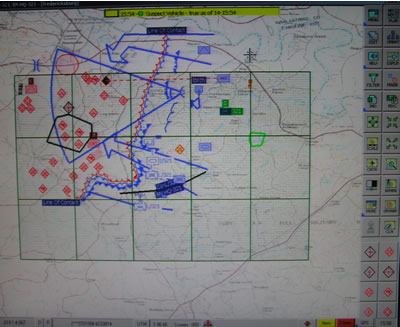Tiger uses interest and location-based information dissemination protocol, supporting Automatic Geographical Publish and Subscribe (AGPS) information broker and secure tactical messaging services, to ensure the delivery of the information at the right time to the right user, down to the single vehicle level. Subscribers receive all, yet only relevant information, according to their geographic location, defined topics of interest, including subject related and geographic related interest.
The network’s AGPS brokers rely on broadband connections to receive and distribute information, thus reducing the overall demand for networking resources. Routing is determined by dynamically weighing various criteria including shortest path, hierarchy, classification, priorities, connectivity and channel capabilities. Each broker gathers subscriber’s topics and areas of interest and disseminates this information when required. Each broker is responsible for a group of stations and servers as works as their mediator to the rest of the network. Placed at strategic nodes, some brokers are enhanced to perform as “gateways”, supporting the network with inter-network connectivity functions. Such gateways are dividing the network into clusters thus reducing message flow while improving delivery time.
Another element of TIGER is the Tactical Message Oriented Middleware (TMOM), providing seamless transfer of messages between C4I applications over different communications channels. Messages are dispatched by “store and forward” techniques routed through optimal, secured and economical dynamic paths. The system automatically retransmits undelivered messages and sends acknowledgements to assure delivery. Messages are automatically be routed around or within any sub-net which has been temporarily disconnected from the tactical intranet to overcome intentional or unintentional service disruptions.
Tiger supports thousands of independent user, empowering every user station to operate as a router, thus establishing an add-hoc routing paths throughout battlespace. The network follows automatic, dynamic and adaptive learning of optimal network topology to support self-forming and self-healing functions, enabling effective and reliable communications coverage for highly dynamic operations. The TIGER architecture supports the coexistence of legacy and modern systems by using media adapters interfacing the applications and communications networks. These proprietary communications controllers enable the integration of hierarchical networks into the unified, dynamic, homogeneous, self-manageable network. TIGER support wireless communications including VHF/HF tactical radios, high capacity data radios, satellite links, wide area networks, wireless LANs and cellular communications. The system is protected by multilayer security levels.




















